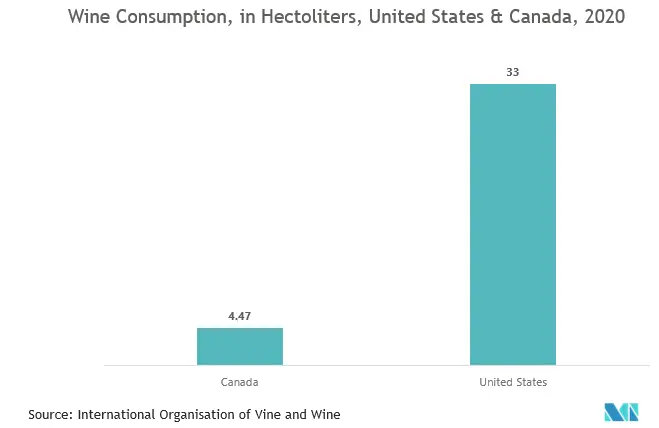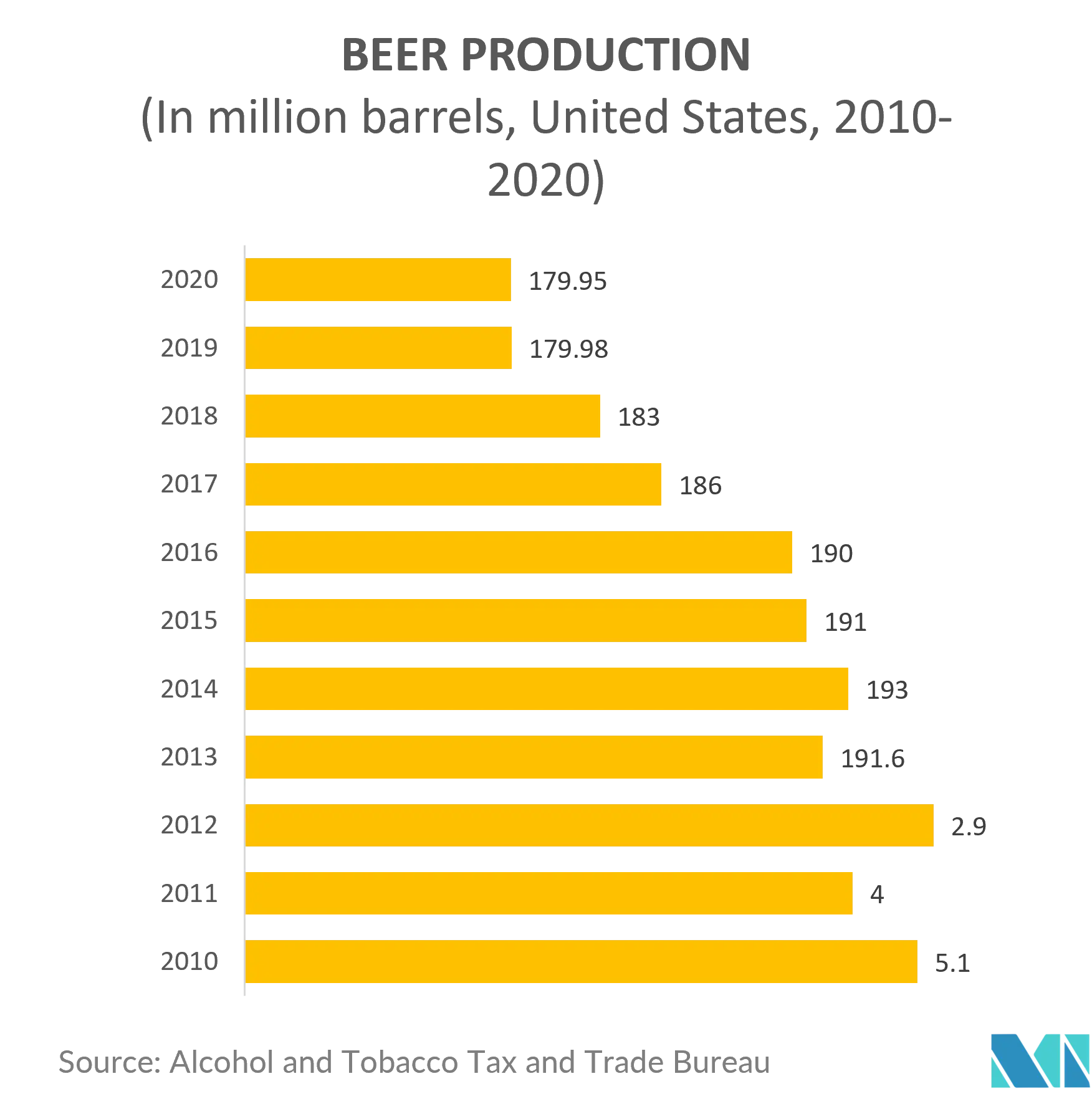Market Trends of NA Alcoholic Drinks Packaging Industry
This section covers the major market trends shaping the North America Alcoholic Drinks Packaging Market according to our research experts:
Wine Consumption is expected to Grow Significantly
- Covid-19 has spurred an exponential increase in alcohol e-commerce and digital engagement. Since e-commerce allows consumers to compare, review, and discover between different alcoholic beverages. It is particularly well suited to the wine segment since people get a fair idea about the taste and smell of wine even before taking a single sip.
- According to the State of the US Wine Industry 2021 Report by Silicon Valley Bank, the domestic and imported US wine market volume increased by 1.45% and 14.33%, respectively. Millennials are adopting wine at a faster rate than any other generation. They are estimated to have low brand loyalty. In general, they like to experiment with distinct-tasting wines from various regions in different packaging, which greatly appeals to their sense of adventure.
- Consumers are receiving PET wine bottles positively, as the bottles are unbreakable and easier to carry, making them exceptional for cottages, parties, and outdoor events. Moreover, consumers appreciate the environmental benefits, which are further favoring innovations in the packaging.
- For wine, packaging and branding is an important aspect, which is evolving, and many suppliers are extending and launching their current/new brands in this space. For instance, United States-based wine producer EandJ Gallo launched a new brand, “Naked Grape,” in the 3-liter box category of wine and got successful. Other brands are also experimenting with innovative packaging solutions to stand out on the store shelf. For instance, the Sofia brand sells wine in pink cans, and the Bandit brand packages its wine in small, sustainable 500 ml and one-liter cartons.
- According to the United Nations of Fine Wines, Veganism is one of the fastest-growing wine trends. It is also reflected in wine production, leading to more vegan-friendly wines, which would require the glass bottles because of zero rates of chemical reactions ensuring that the wine inside the glass bottle has its aroma and flavor intact. This new trend will help the glass packaging segment to retain its top position in the given market.

United States is Expected to Hold Significant Market Share
- The United States consumes the largest volume of wine of any country, at 33 million hectoliters in 2020, which is more than seven times Canada's total wine consumption. Portability and convenience became significant drivers in wine packaging innovation, which led to United States-based new-age wine sellers Bota Box and Black Box to explore alternative packagings, such as tetra packs and bag-in-box wine and cartons. According to the State Of Wine Industry Report 2020 by Silicon Valley Bank, canned wine in the country has recorded an 80% growth in 2019, despite the 0.5% as an overall share.
- Lightweight glass has been the major innovation in recent times, offering the same resistance as the older glass materials and higher stability while reducing the volume of the raw materials used. Also, alcoholic drinks are expected to lead the way for the glass packaging market, owing to the decent sales of beer and whiskey in the United States, with an increasing demand for premium variants.
- In 2020, the United States witnessed the biggest volume gain in total beverage alcohol volume in nearly twenty years. It was up by 2%, the most significant increase since 2002. Among alcoholic beverages, beer witnessed substantial growth in the past few years. The majority of beer volume is sold in glass bottles and is driving the need for increased production rates in the glass packaging industry. The increasing demand for premium variants in alcoholic drinks like whiskey, rum, etc., is also driving the growth of glass bottles.
- However, the ongoing trade war between the United States and China may impact the glass packaging market in the country. Ardagh Group stated that over 70% of the US wine industry glass bottles are imported from China; and due to increase in the tariff rate imposed on China imports, the need for improving glass manufacturing infrastructure is expected to rise, leading to an increase in the overall cost of the product in coming years.


